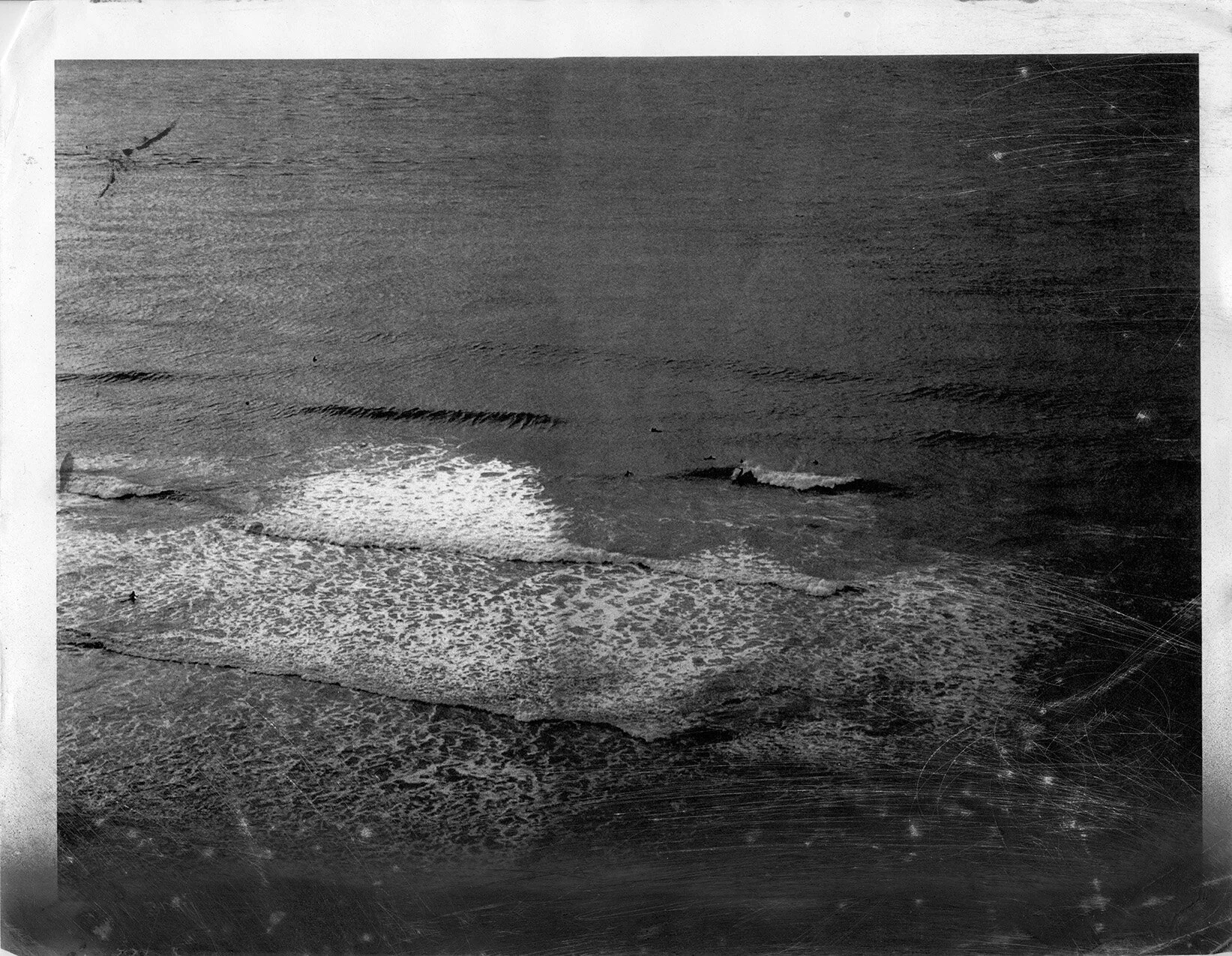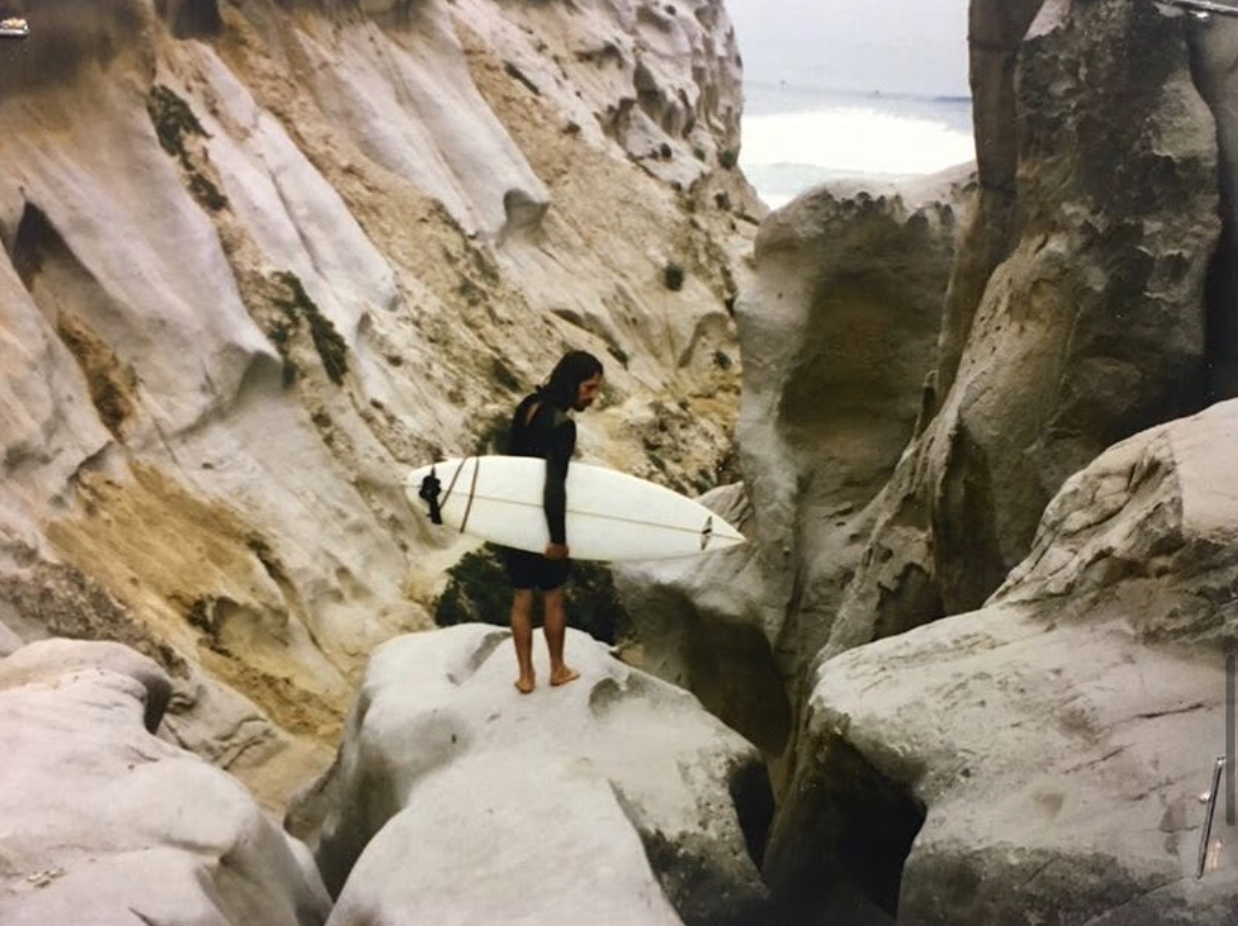Interview with: Photographer Ari Marcopoulos
Ari Marcopoulos is a photographer who’s often referred to as a cultural anthropologist. After moving to the US from Holland in 1980, Marcopoulos zeroed in on the fringe, documenting New York City’s cultural frisson: a collaborative menagerie of art, hip hop, and skateboarding. His first job stateside was assisting Andy Warhol and he would go on to photograph the immortalized trio of Warhol, Keith Haring, and Jean-Michel Basquiat before turning his lens toward early hip hop stars like Public Enemy, Beastie Boys, and The Fat Boys. Not long after that it was skateboarding and the Brooklyn Banks crew that captured his attention, and his iconic portraits of Harold Hunter and Justin Pierce kicked off his chronicle of ‘90s skateboarding scenes in New York and San Francisco. He’s made underground skate, snow, and surf films, shot a Jay Z album cover [Magna Carta Holy Grail] and his work is part of the permanent collections at The Whitney and The San Francisco Museum of Modern Art. Ari’s work was recently featured at Fergus McCaffrey St. Barth’s show entitled “Barbarian Days” — a surf-themed exhibition that caught our eye and offered an opportunity to talk with one of the underground’s finest documentarians. –Travis.
Inherent Bummer: What struck you about moving to the U.S. as a young man from Holland? And what was it about skating, basketball and hip hop that attracted you?
Ari Marcopoulos: Just the city, as it was, really attracted me. When you’re young, it’s the big buildings, the skyscrapers — especially when you come from a place like Holland where there are no buildings over 10 or 12 stories. Not many of those at all really. And I was always into basketball, primarily, and I just had to get by, you know? When you’re young and in a city like New York, you quickly start discovering things, wherever you go, wherever you hangout. I noticed certain things. The most interesting thing to me was the hip hop culture. Not just musically, but I would see them on the subways, this kind of style of dress and then when you meet other young people, go out and go into some of the more independent art galleries. That’s kind of how it got going.
The late Craig Kelly at Blacks by Ari Marcopoulos.
Skating and Hip Hop aren’t the easiest cultures to just dive into, how did you gain access to document them?
I don’t have a strategy. I’m just who I am. I never really schemed to get into anything. If you're interested in something, I mean, there’s no hierarchy in skateboarding, so gaining access for it, just having the passion for doing it or documenting it should get you the access. It’s really a fantasy that people think that they need to be given access. You might have access to everyone, but if you don’t do anything with it, nothing’s gonna come of it. There’s a big sort of idea that if you know a great basketball player that you’re also going to become a great, that’s not how it goes. I think that sort of is a myth that the access will lead to great images, but you have to be focused and see where it takes you. I have for years, I did things for years without making any money.
So you never got vibed?
I think some people resist and others don’t. If you talk about surf culture there’s the whole local culture that exists in some places — like if you park your car somewhere they smash your windows are some shit — they act like that spot on earth is only theirs. That attitude exists. I think in skating perhaps too — there’s definitely in the beginning maybe a more... maybe a scarier image, it was sort of a cultural, urban thing, and that’s changed a lot now because skateboarding has become much more — and many, many more people are skateboarding now.
What were some of your early experiences with surfing?
My first experiences with surfing were in Rio de Janeiro, Brazil. I wasn’t documenting it, I was just looking at it. This is in the late ‘70s, this is the first time I saw surfers and surf culture. They all had skateboards, too. So I bought a skateboard in Brazil and it was basically a wooden plank with clay wheels, and I took that back to Holland but with the cobblestones that was a foregone conclusion that that wasn’t going to work. That was my first contact with it. And while I was there I bought some surf magazines, which I think were mostly American magazines. The weird thing about the surfers in Brazil were, they were kind of kids from all backgrounds but the surf magazines were full of white kids. So it was a strange disconnection there. But I think that was the first time. Since then I had smaller interactions with surfing. I lived in Northern California and Sonoma county for 12 years. I met some people that surfed up north and I had some friends that would go out and surf and sometimes I’d go with them. And then some of the snowboarders, I did a lot on snowboarding, and those guys were big on surfing. I remember one time I went surfing with Craig Kelly...I just posted a picture of him actually and we went to these crazy trails, and these beautiful — I don't know what kind of rock — but these soft shaped rocks and through this valley down to the beach…
Blacks?
Yeah, I think so. Surfing is really difficult. People tell me it’s easy, and I think it’s really difficult. I’ve tried several times, but I’ve never been close enough to an ocean. For me, when I think about surfing, I feel that, I always had this idea that a surfer is someone who has a shack and when the waves are good he goes out and he surfs. But then I realize, when I did a film, for the NRDC [Natural Resources Defense Council], about protecting the oceans, and then I went out with some big wave surfers and shot some footage in Santa Cruz and up north. There was like a slab that we drove hours to get to.
Have you tagged along on any international surf trips before?
I went with [photographer] Aaron Chang to Todos Santos for a big wave contest and I shot some video for him. That’s the trip that broke the image of surfing for me. I always thought these guys are the caretakers of the ocean, but they sure use a lot of jet skis and helicopters to ride waves. I was like, “These guys are carving huge carbon footprints. Snowboarding can be like that, too. They talk about the climate, but when it comes to going uphill, they’ll take a snowmobile instead of hiking. So I have a very conflicted relationship with that.
From Keith Hufnagel memorial book 9-24-20 by Ari Marcopoulos.
There’s become several factions in surfing. There’s the more aggressive big wave guys, the jockey competitive guys. Then there are still the traditionalists who will and do paddle out from a hut when a wave breaks. Then there’s the kids who are basically gymnasts.
I do admire good surfers and I love watching. I checked on your website, I saw a thing that you did and I was amazed by these kids catching these airs and doing 360s and landing on the lip of the wave. I was like, “Shit they really took it to the next level.”
I really loved your film “The Tazynator.” I’ve seen a lot of attempts at that style of film and they rarely hit. But that one was just perfect. Tell us about that film.
Well, Anthony Tashnick is a guy who’s full of enthusiasm. I met him through Patrick Trefz and all the guys who are surfing with him were all big wave guys. It’s funny because I’m not part of that scene, they were down for the program to do something with me. I edited that film like in an evening or something, and the idea for me was sort of James Bond like... just the way he jumps down 10 times his body length into this lagoon off the rocks, and paddling into the wave and the whole process of getting out there, combined with the music and the early morning, the way the music comes up. It was really about creating this spy-like atmosphere. That spot we shot gets a lot bigger — and it was still pretty big. I love the bell shape of that wave. It comes up and then it disappears. And then the ending shot, I really like how he fights his way out of the wave.
[Editor’s Note: The Tazynator is available for viewing only during specific windows. We’ll make sure to let you know whenever it’s playing, it’s worth the hunt.]
Your interpretation of surfing and the surfing process was so cool.
It’s also brief. It’s not like the “Succession” of surfing [laughs]. I remember Volcom put out one of my VHS tapes called The Walrus Dreams, and there’s some surfing in there. The surfing is minimal, and the snowboarding is minimal, too, really — it’s much more about being on the road and dealing with bad weather. It was like the most hated film of the year by the industry, but the most loved by the riders. Lots of younger kids that started filming for Grenade were very influenced by that film, because it broke away from the norm.
There’s a photo in the show called Deadmans that’s really interesting. Tell us about that one.
Yeah, that is in Northern California, shot from up high, looking down, and there’s a person on the wave. Something I started to do when I was in Rhode Island, I would look at the surf report and it looked like the waves were gonna break pretty big — maybe not ideal conditions, but I was quite sure people would be out there surfing. I knew this one spot in Providence. It’s a cliff walk where tourists and everyone can walk. The views are really incredible, beautiful cliffs. I went out with a large format camera and framed up a landscape and I’d watch with my [naked] eye — because in the camera I can’t see. They’re little ants [in the water] and I try to catch someone doing something, just even a cutback or riding top of the lip, just something that you might notice after you look at the picture for quite a while that there’s someone actually surfing on it. I have a landscape from that day at the slab, too, and the surfer in the picture is tiny, but he’s just in the barrel and coming out at high speed and you see it, but it takes you a while. I often don’t know who’s in the water, I just hope, and often there’s someone good. It’s cool to see the human figure as part of nature. But that’s not something I do very often. I went with my wife and she’s was like, “Ari, can we go now?” And she knows, I’ll stay for a long time to get the shot I’m after.
I wanted to briefly mention the Keith Hufnagel book you made in memoriam. Really beautiful book.
Yeah, I just went the day that I got the call [about Keith’s passing]. I went to the beach and that was my way of mourning him. There was a small shark washed up on the beach. It was dying. I put it in the water, but it didn't make it. It was interesting that it was there that day. He’s a good guy. He also tried to surf once, he almost drowned. I think Barry McGee saved him. He was like, “What the fuck!”
Check out Ari Marcopoulos’ work here and be sure to check his work in Fergus McCaffrey St. Barth’s show “Barbarian Days”, now showing.






